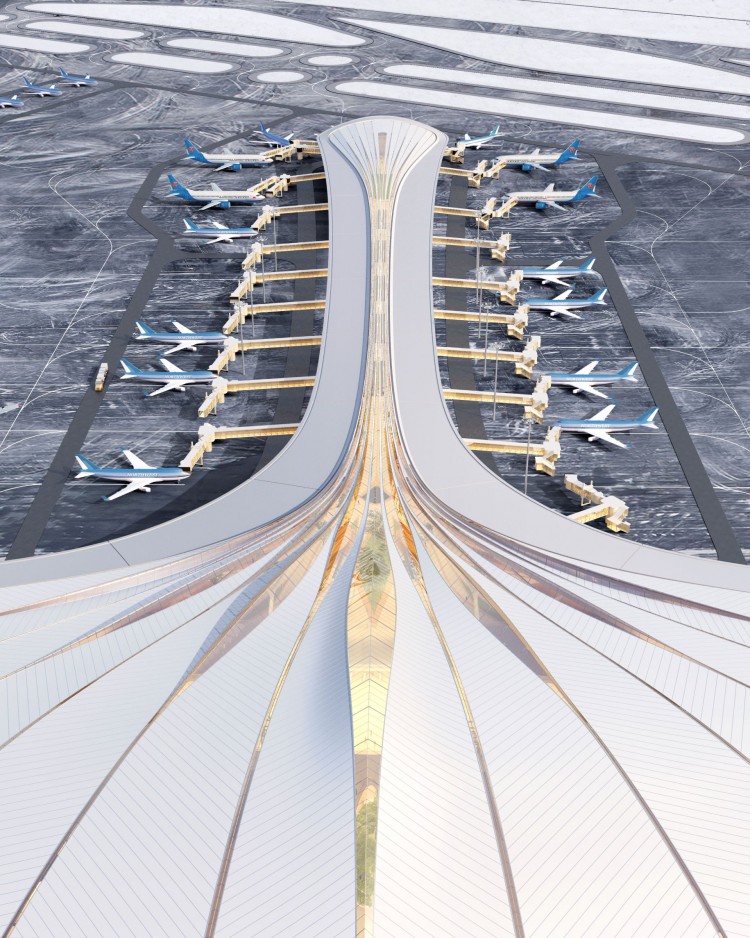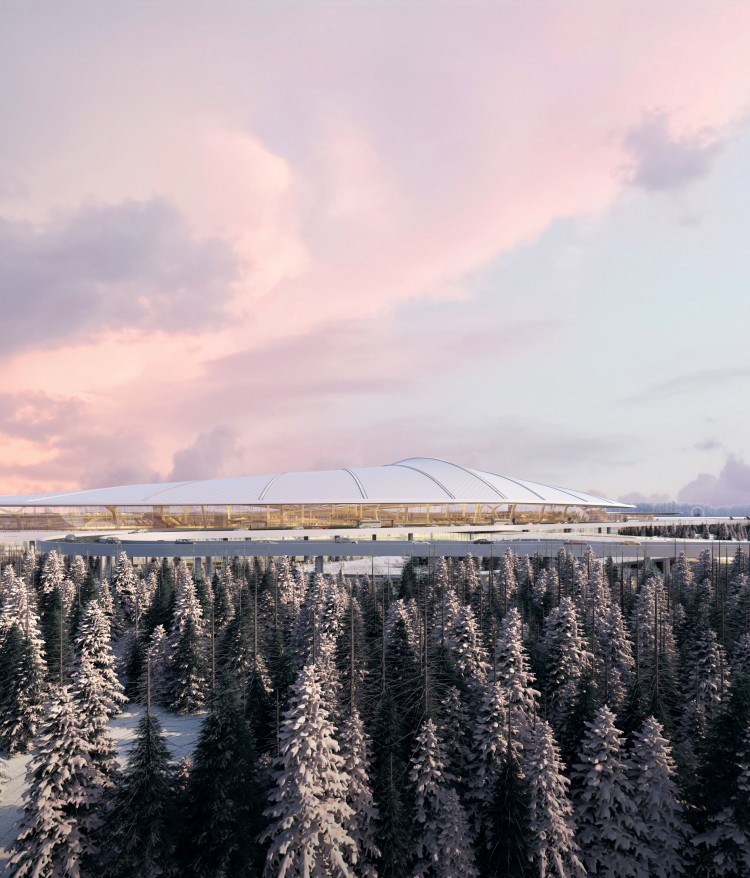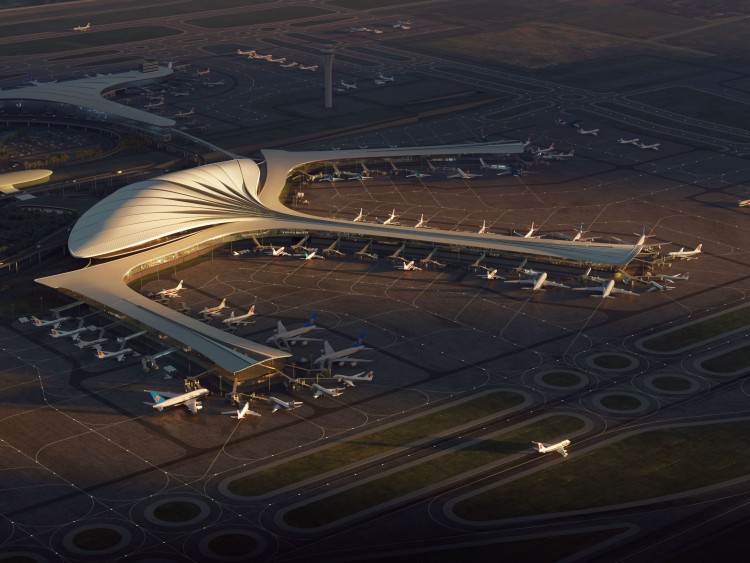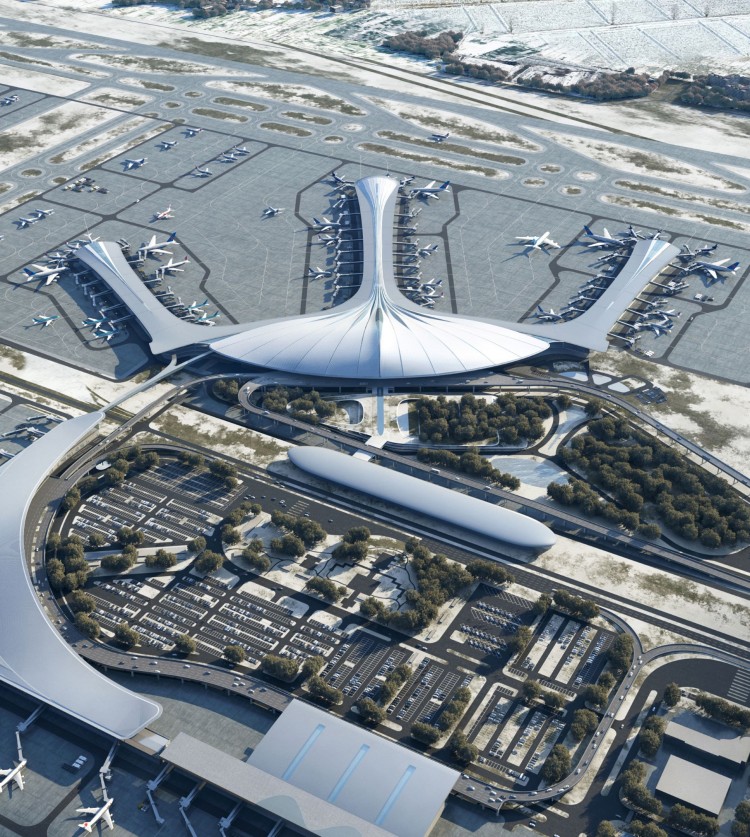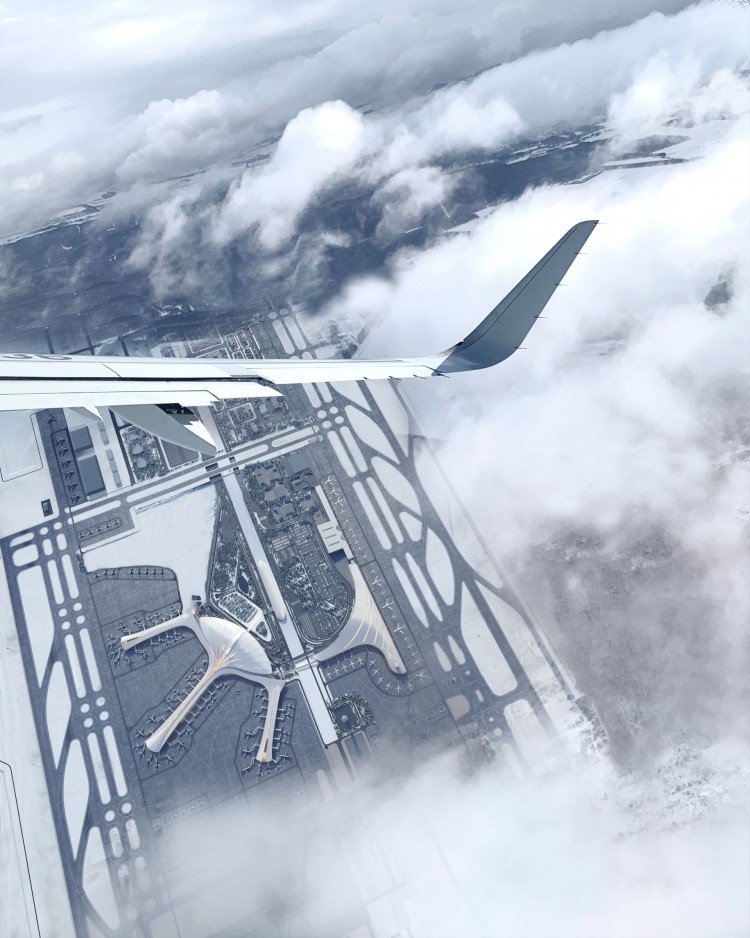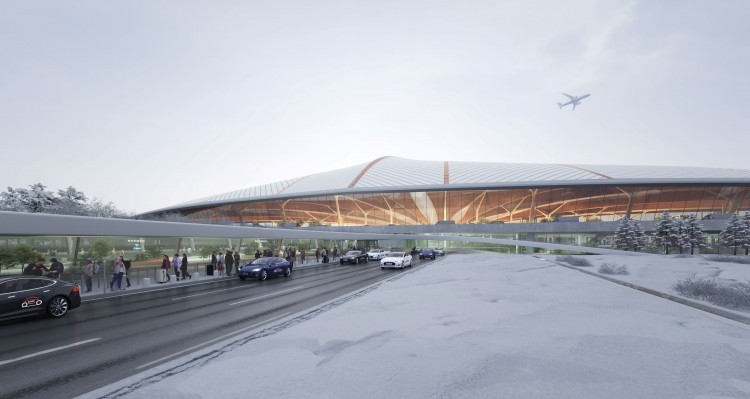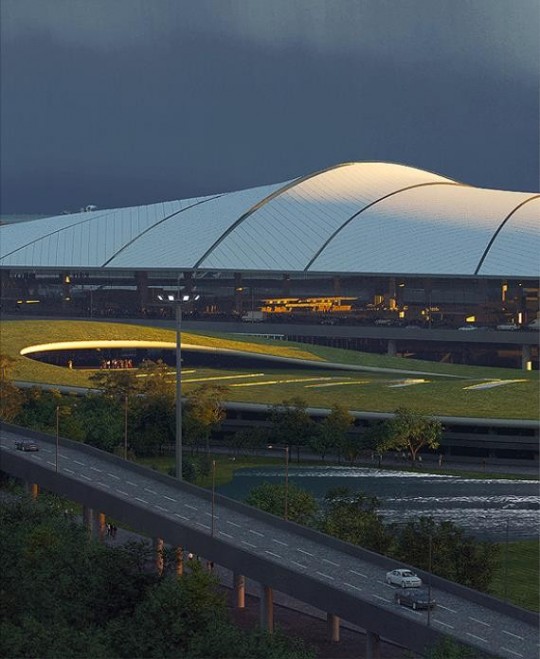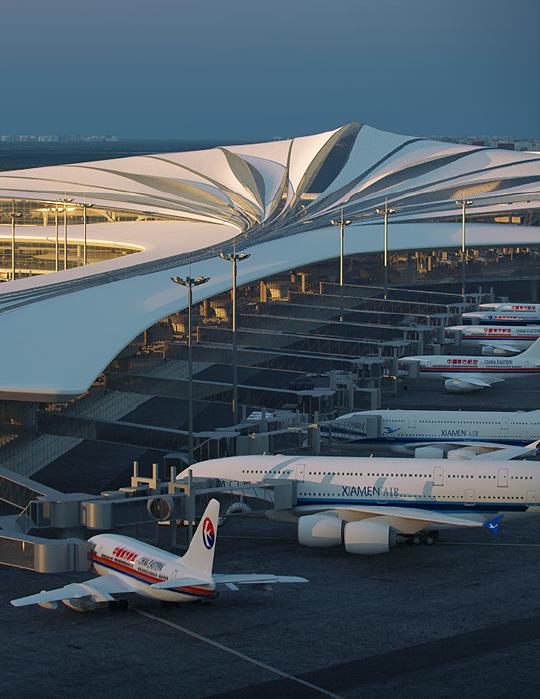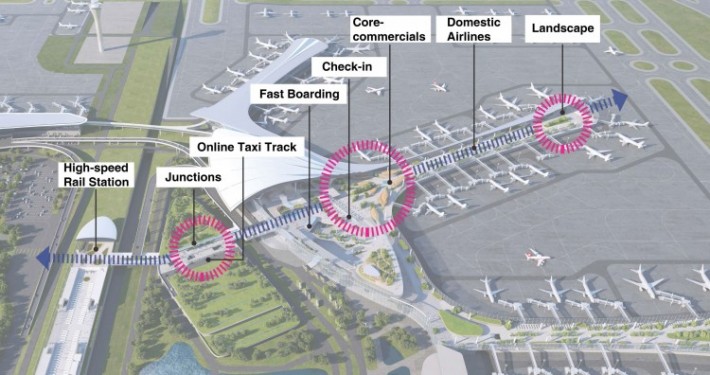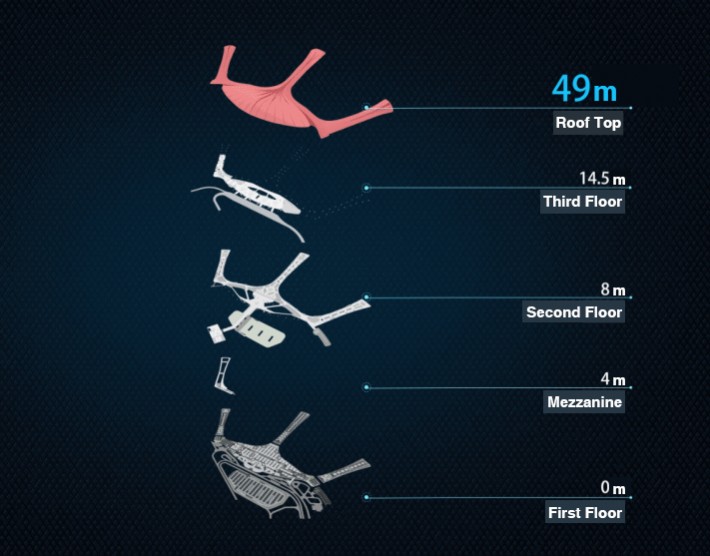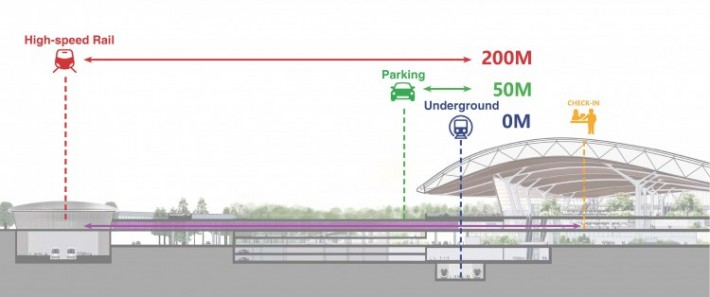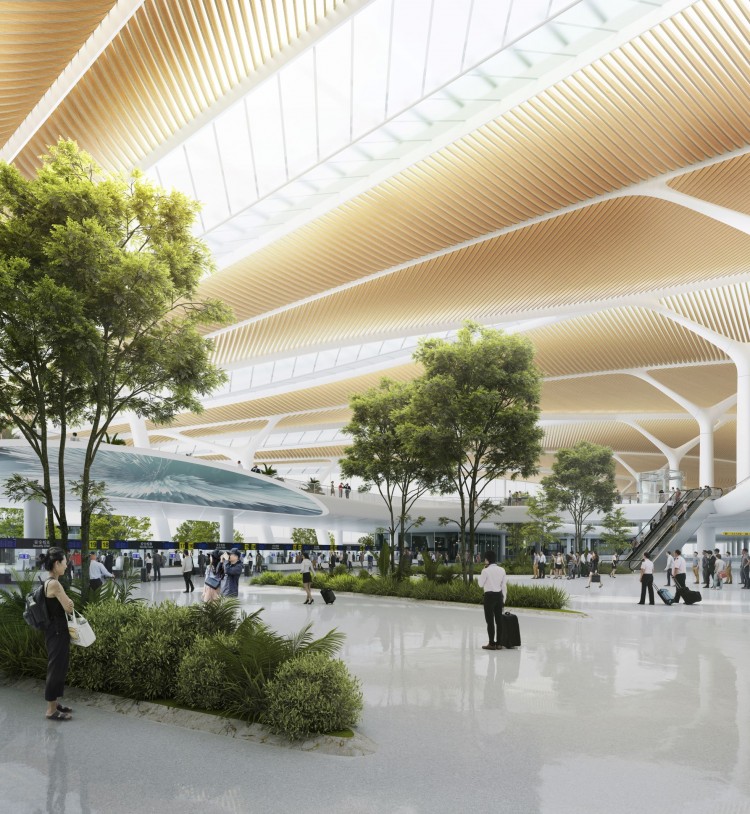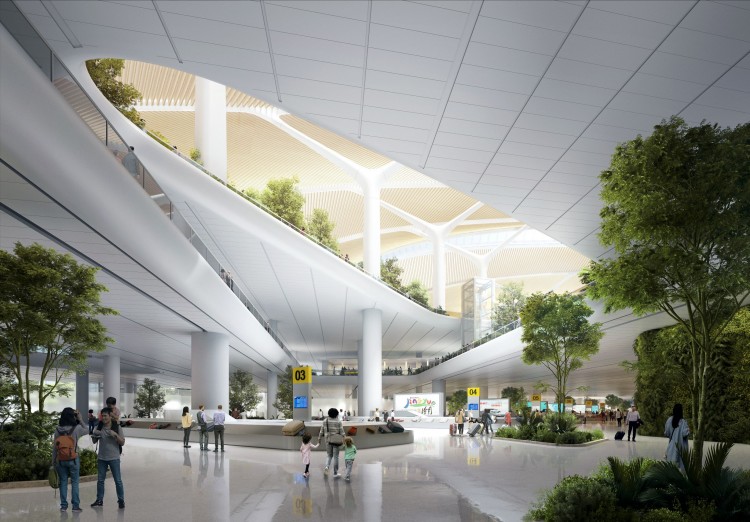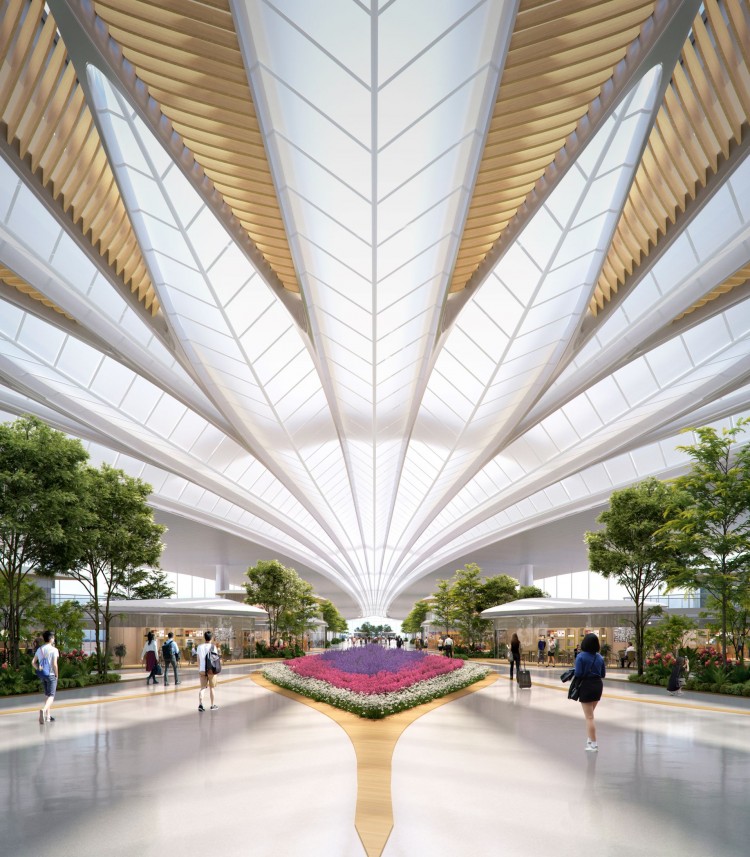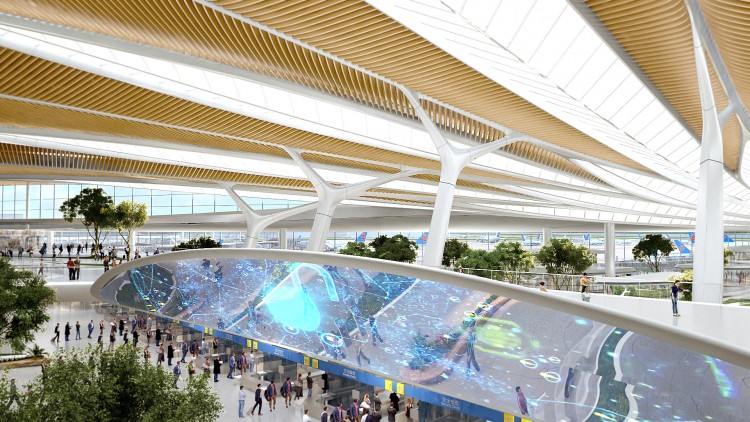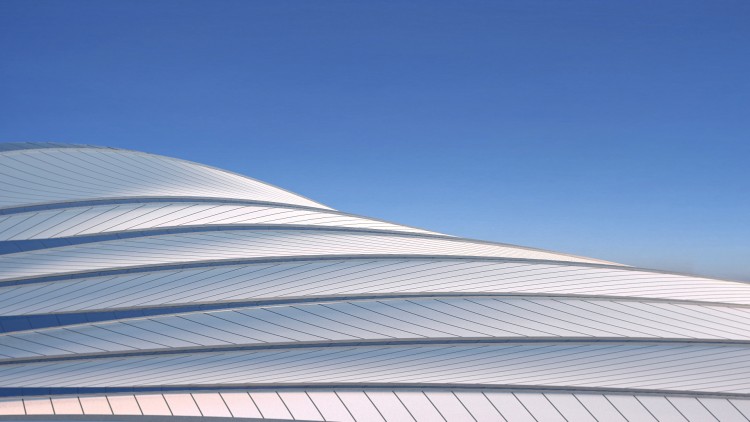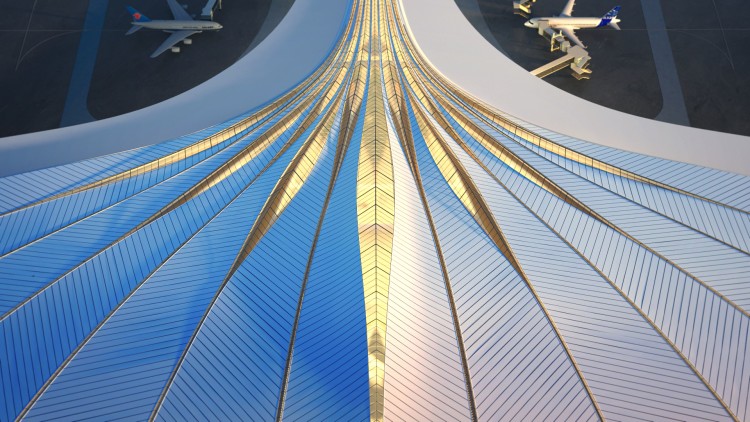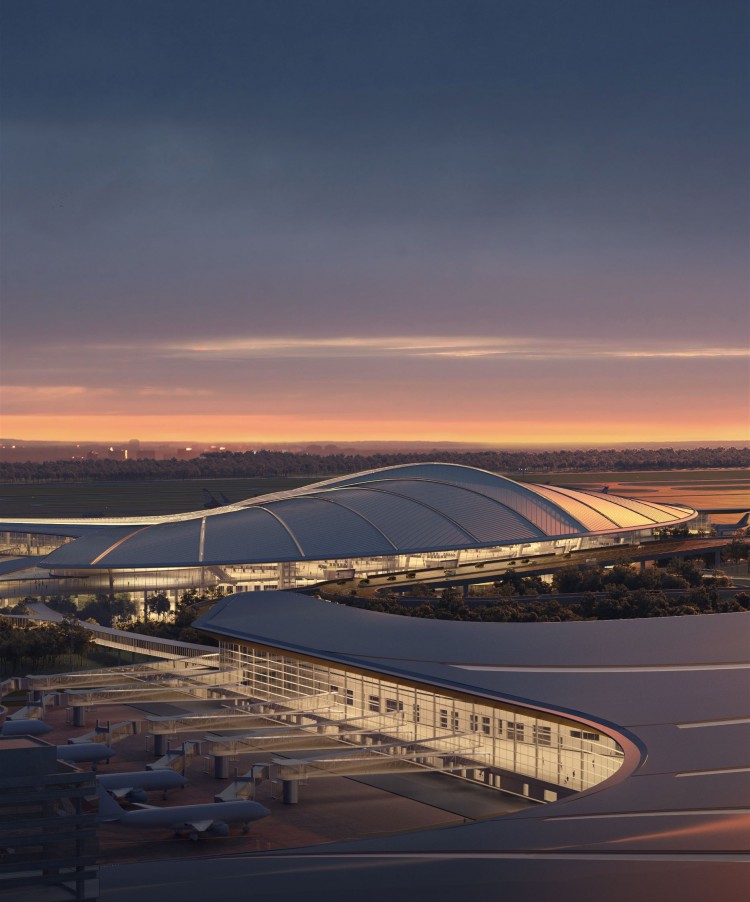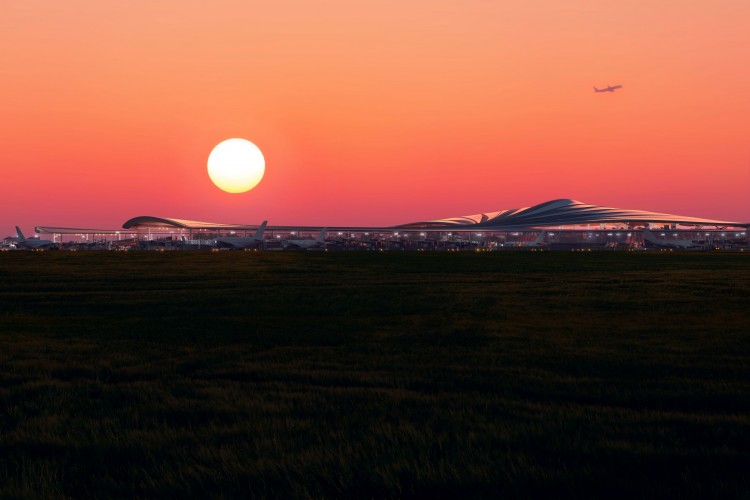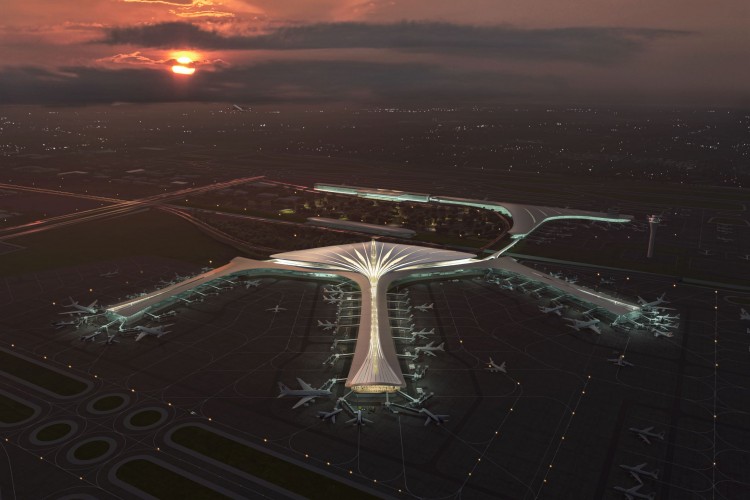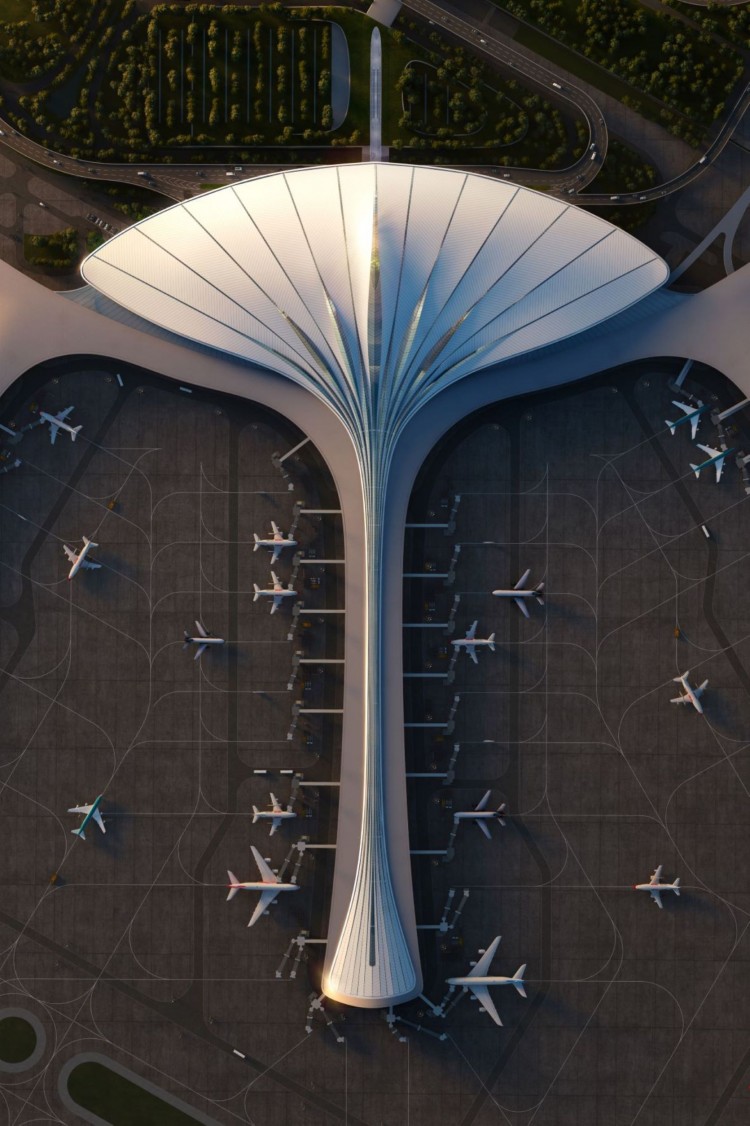
MAD Architects, led by Ma Yansong, and in collaboration with China Airport Planning & Design Institute Co., Ltd. and Beijing Institute of Architectural Design Co., Ltd. has won an international competition for the design of Changchun “Longjia” International Airport Terminal 3 in China.
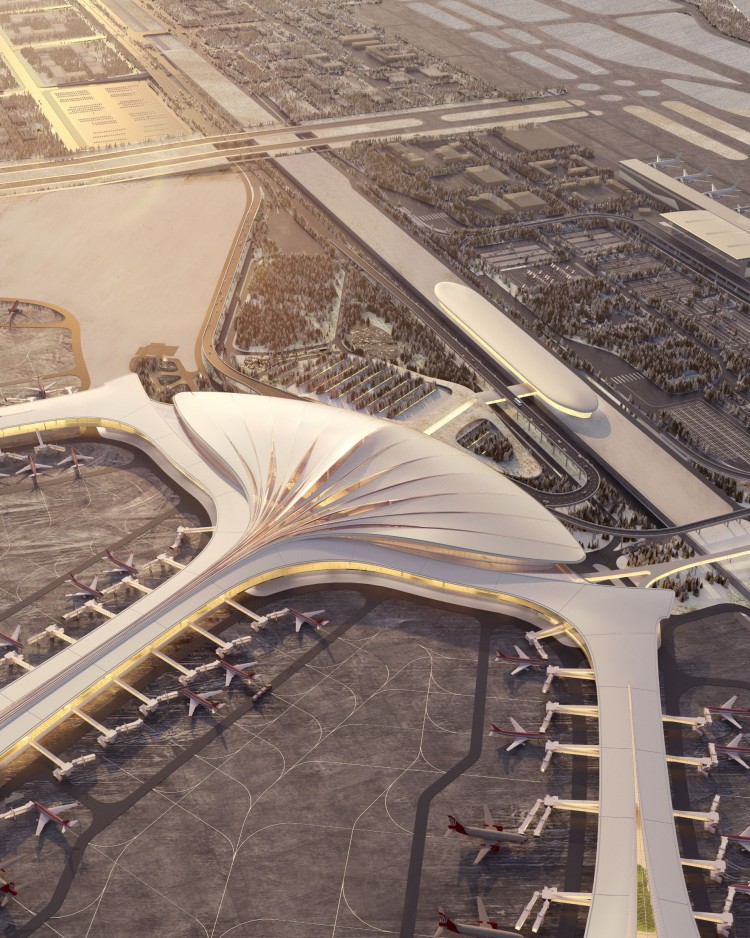
The overall site has a footprint of 177.6-hectare, and a total building area of nearly 270,000 square meters. The terminal will contain 54 aircraft gates and is expected to accommodate 22 million passengers per year after completion, that will become the biggest air transportation junction of Changchun city and entire Jilin Province which is one of the earliest manufacturing industrial metropolises with a population of 23 million. The city is surrounded by rich natural resources like dense forests that are well-known as the most significant in the northeastern of China, as well as the international regional hub in Northeast Asia.
“The future large-scale transportation junction is first of all an important public space in the city. Art, synthesis, diversity, and humanity are all important.” – Ma Yansong
The terminal building was designed to add a human-scaled space with a calming presence to the Airport, both from a distance and from within. As visitors approach from the high-speed rail “Longjia” Station or the parking structure, they will be greeted by the terminal’s unique fan-shaped profile that resembles a floating feather — a nod to the airplanes that will be ascending and descending from its terminals throughout the day.
By adopting a three-fingered corridor structure surrounded by arcs, the terminal will maintain an overall harmonious layout in its connections to the T1 and T2 terminal areas while increasing the number of passenger seats near the aircrafts. Upon entrance, passengers will encounter a large, uninterrupted ground floor that provides direct access to the subway, automobile road and other methods of transportation connecting the terminal to the larger site.
Additionally, passengers arriving without checked baggage will benefit from smart airport facilities such as self-service check-in machines and smart security checks. The overall spatial layout will save land and reduce the amount of earthwork, while the roofline uses height differences to reflect the cross-connections of different transportation modes from above.
The subway station hall, in particular, is seamlessly integrated into the central space of the terminal building to reduce the number of transfers between the subway and the airport by reducing the distance between the terminal entrance and the east expansion station hall of “Longjia” Station to less than 200 meters. Given that nearly one-third of passengers have entered and exited the airport via high-speed rail since 2018, the intercity railway will become an increasingly important means of inbound and outbound transportation for Changchun Airport.
The terminal also reflects the charm of Changchun as a "Garden City'' through the creation of what the design team has referred to as a "garden airport." The exterior space area is characterized by forests, lakes, meadows, and undulating terrain, while the indoor garden system combines trees, ground covers, and water features to create a "cold zone garden" that reflects the local climate.
Natural light is brought into the departure hall through the feather-shaped roof to create a bright and warm interior space that provides much-needed sunlight to the garden spaces within. The structural system continues the rhythm of the building's skin to express the logic of force transmission, which converges toward the center together with the skylight, guiding the direction of passengers naturally. The unique wooden ceiling also combines with the structure, skylight and ceiling to create a dynamic interior space.
The terminal’s approach to green design at an intimate scale is a response to the timeless human need for connection to human and plant-life alike; all within a shape as light and airy as a feather floating in the breeze.
Changchun Airport Terminal 3
Changchun, Jilin Province, China
Terminal Site Area: 177.6 hectares (1,776,000 square meters)
Terminal Building Area: 270,000 square meters
Client: Jilin Provincial Civil Airport Group Company
Consortium: China Airport Planning & Design Institute Co., Ltd., Beijing Institute of Architectural Design Co., Ltd., MAD Architects
MAD Architects Team
MA Yansong, DANG Qun, Yosuke HAYANO, LIU Huiying, LI Jian, SUN Shouquan, SUN Mingze, SONG Minzhe, WANG Fei, LU Zihao, XIAO Yuhan, CHEN Wei, CAO Xi, Yoshio FUKUMORI
China Airport Planning & Design Institute Team
MU Tong, YAO Huilai, FENG Xiangling, SUN Yongxue, YAO Yuan, XU Junjie, ZHANG Bao, ZHANG Yan, SHEN Xin, QI Junjie, HAO Wenjia, LIU Zihao, XU Ke, LI Zhennan, FENG Mengyao, LI Xiong, ZHENG Guangshun, SHEN Yi, LU Xin, LI Henghui
Beijing Institute of Architectural Design Team
WANG Xiaoqun, SHU Weinong, WANG Yizhi, LI Shaokun, SU Yao, WU Di, WANG Yisu, WANG Bin, REN Jie, ZHANG Zhongqi, ZHANG Linyi, CHEN Lin, GU Xianliang, MU Yang, FAN Shixing, WANG Hanmo, ZHANG Shizhong, YU Xinqiao, ZHANG Shirui, PAN Ming
